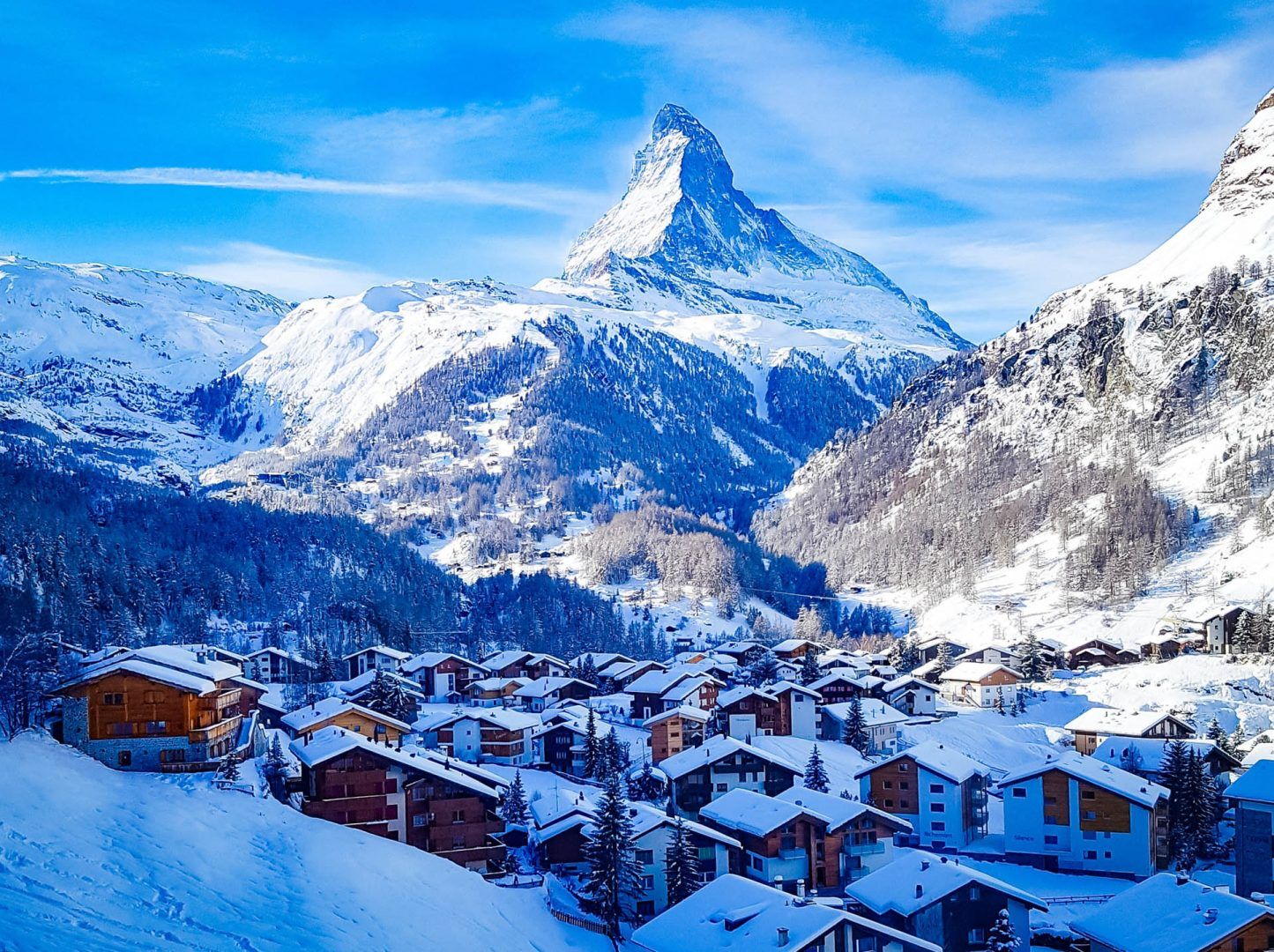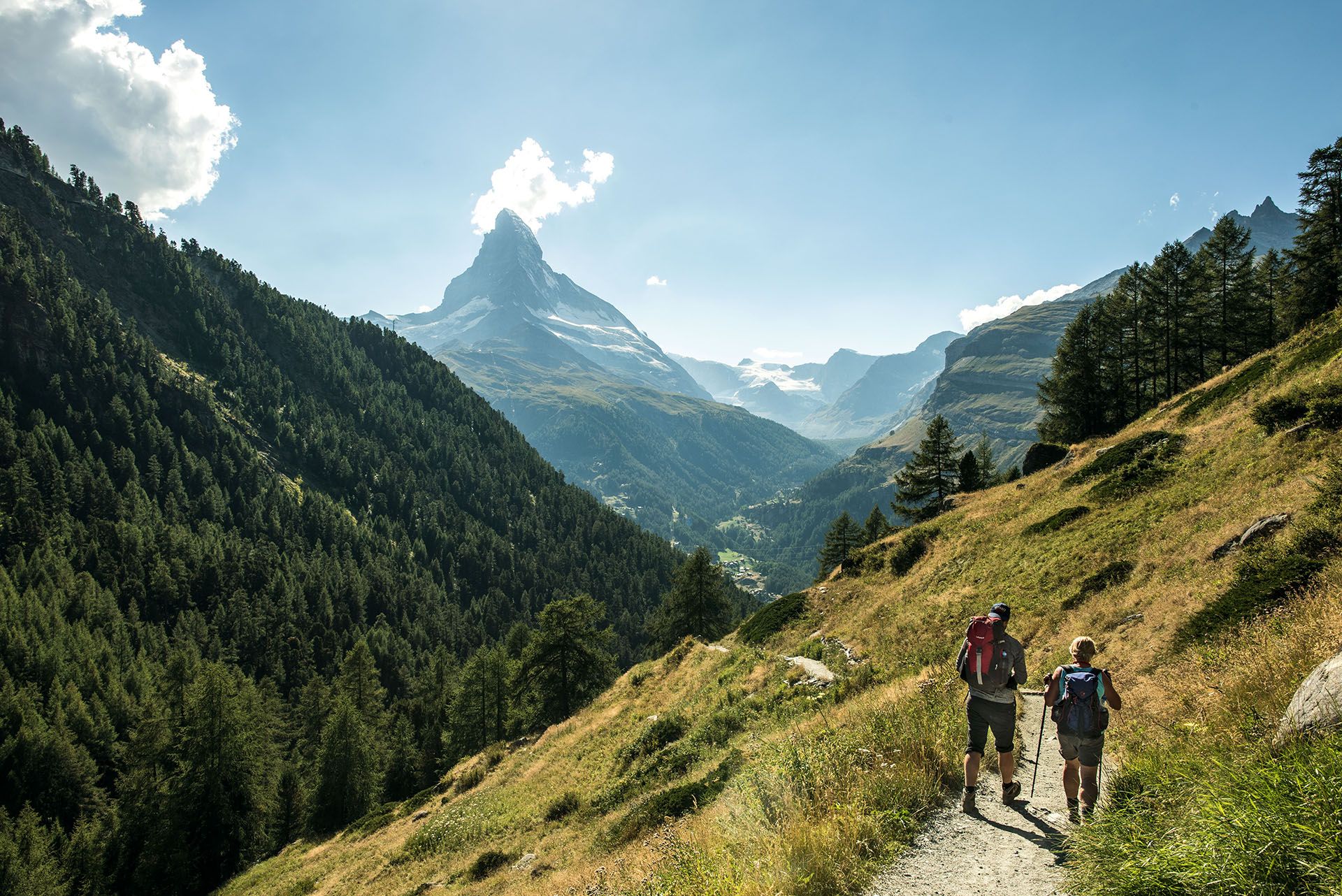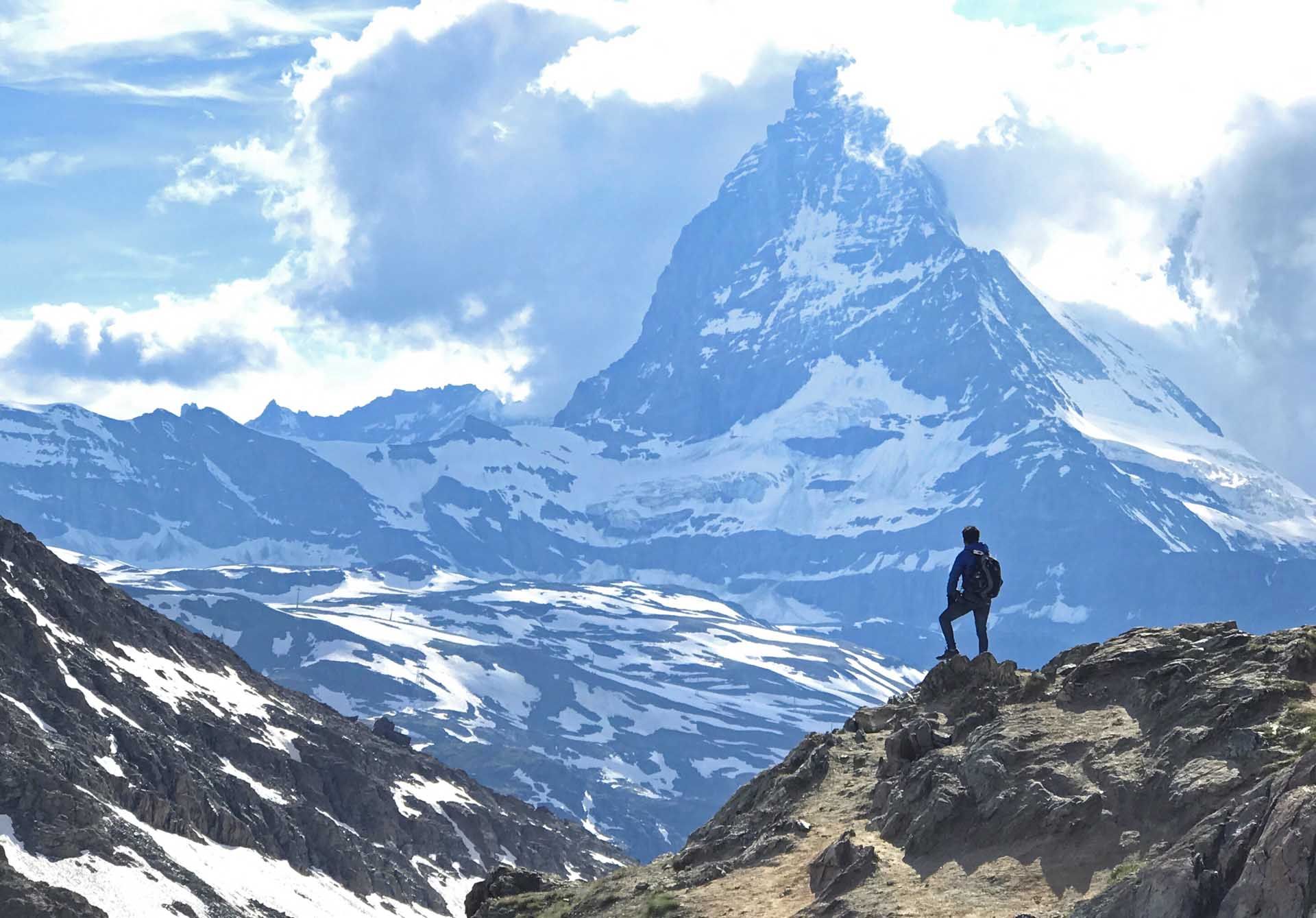Planning your own trip? Prepare for your trip
Use Rough Guides' trusted partners for great rates
- City Break
- Where to Stay
- Europe
- Zermatt and the Matterhorn
- Inspiration
- Local Guides
- Travel Advice
- Where to stay
- See & Do
- Travel Tips
- Switzerland
Book your individual trip, stress-free with local travel experts
St Moritz may have the glamour, Verbier may have the cool, Wengen may have the pistes, but Zermatt beats them all – Zermatt has the Matterhorn. No other natural or human structure in Switzerland is so immediately recognizable. Plan your trip to Zermatt and the Matterhorn with our guide to Zermatt and the Matterhorn — based on The Rough Guide to Switzerland, your travel guide for Switzerland.

Discover alpine majesty in our Zermatt and the Matterhorn travel guide © Shutterstock
In most people’s minds the Matterhorn stands for Switzerland like the Eiffel Tower stands for France. Ironically, though, the mountain is as much Italian as it is Swiss – the border runs right across the peak.
The Matterhorn's majesty was also one of the reasons you voted Switzerland one of the most beautiful countries in the world.
The pretty little village of Zermatt welcomes everybody, regardless of financial status. Backpackers and hikers rub shoulders with high-society glitterati amid a fluster of tour groups, electric taxis and horse-drawn carriages. Everyone has come to see the mountain.
While Zermatt is busy year-round, the crowds never seem to matter — with a little effort you can easily vanish into the surrounding wilderness, leaving everyone else behind. To find out for yourself, book a Zermatt hiking excursion with an experienced guide.
That said, the quickest way into that wilderness is via the Gornergrat railway, which lifts you to a spectacular vantage point overlooking the Monte Rosa massif.
Alternatively, hop on a cable car to the summits of the Rothorn or Klein Matterhorn – the latter is the highest cable-car station in Europe.
Matterhorn aside, the Zermatt Music Festival, held every September, features classical music concerts, film screenings and exhibitions.
Rough Guides tip: To increase your chances of a great holiday, read how many days you need to spend in Switzerland.

A stunning sunset over Switzerland's Matterhorn © Shutterstock
The subterranean Matterhorn Museum features films and interactive displays on mountaineering, all set around a reconstruction of a nineteenth-century Alpine village.
The Anglican church, situated on a low ridge above the main street, is emblematic of Zermatt’s history as a climbing centre — and of a place traditionally favoured by British visitors, many of whom were climbers.
In summer, the slopes above Zermatt hold some of the country’s most scenic hiking trails. The ever-popular GGB Gornergrat Bahn leads up from the village across the meadows of the Riffelalp to the Gornergrat itself (3130m).
Hikes between the stations are all rewarding, and top Zermatt and the Matterhorn travel experiences. For example, it’s an hour from Riffelalp station up to the Riffelberg Hotel, set on a spectacular exposed platform overlooking the valley.
From Zermatt village, an underground funicular tunnels up to Sunnegga (2300m) – on a sunny plateau and linked to the Rothorn summit by gondola.
Walks from Sunnegga are beautiful, weaving for a comfortable hour or two between the tiny lakelets of the Leisee, Moosjesee, Grindjisee and Stellisee out to Fluhalp (2616m).

Hiking is one of the best things to do in Zermatt and the Matterhorn © Swiss Tourism
Zermatt’s main street is Bahnhofstrasse, which stretches away from the station towards the mountains, becoming Oberdorfstrasse after the Catholic church, whose cemetery is filled with memorials to attempts on the Matterhorn and other peaks gone wrong.
Across the road from the church is the worthwhile Matterhorn Museum; meanwhile Oberdorfstrasse dips gently downwards, lined with weathered-wood chalets and traditional mazots, barns raised on stone discs to protect against mice, before reaching the river at Bachstrasse.
Beyond, paths head on past the Forest Fun Park and Gorner Gorge and into high, open countryside.
To see that in style, board the world's highest cable car to discover the Matterhorn Glacier Paradise with its spectacular viewing platform, ice palace, and cinema lounge.
There are dozens of hotels in Zermatt, so you shouldn’t have any problem finding somewhere to suit, though book well in advance for the winter and summer high seasons.
It must be said, too, that Matterhorn views from your balcony or window are truly worth paying extra for. Apartments or chalets should also be booked well in advance (some places are reserved a year ahead).
The standard rental period is a Sat-to-Sat week; only a handful of owners are willing to rent for less, and then only in the low season for a minimum of three days.

Zermatt © Swiss Tourism
Considering the prices in some of Zermatt’s hundred-plus restaurants, opting for picnic fare from the supermarket opposite the train station is a prudent move if you’re on a tight budget.
Otherwise, you'll find a spread of restaurants serving classic Swiss fare, often with Italian influence.

Traditional Swiss cheese fondue © Shulevskyy Volodymyr/Shutterstock
It's fair to say Zermatt and the Matterhorn aren't hotspots for nightlife, with most action focused around hotels, especially the Unique Hotel Post.

Come evening, head to the Unique Hotel Post to experience one of the best nightlife venues in Zermatt and the Matterhorn © Swiss Tourism
The Matterhorn Gotthard Bahn operates the trains from Brig and Visp to Zermatt, which are free to Swiss Travel Pass holders — why not buy your pass in advance?
Although Brig is the starting point for MGB trains, mainline trains from the west are quite often timed to make the connection at Visp instead (Viège in French) — check the timetable carefully. South of Visp, trains climb to Stalden, the departure point for buses to Saas-Fee.
It’s possible to drive as far as the village of Täsch, where a dozen large parking areas, including the giant Matterhorn Terminal take care of all motorized transport, with everybody bundling onto trains for the final 12min pull into Zermatt.
Don’t be tempted to park in the valley except at designated parking places — you’ll end up with a parking ticket.
The square outside the station is generally full of little electric taxis (higher rates for extra passengers, luggage, and journeys to the edge of the village).
The electric buses that are synonymous with Zermatt serve all points, and are free if you have a ski pass.
The carriages you see jangling through the streets are mostly full of guests from the most expensive hotels, though one or two can be ridden on by the less well-heeled — ask the tourist office to book them.
Also find information on how to get to Switzerland.

Zermatt chairlift © Swiss Tourism
Lying in the next-door valley to Zermatt, Saas-Fee (1800m) is sometimes overlooked, perhaps because it doesn’t have any train access. However, were it not for the Matterhorn next door, the array of peaks around Saas-Fee would take centre-stage on any Alpine itinerary.
The upper part of the Rhône valley, stretching from Brig to the high Alpine passes, is known as the Goms. Winter sees thick snow covering the whole region, perfect for cross-country skiing at all levels.
About 8km out of Brig you’ll pass Mörel, with signs for cable cars rising west to Riederalp and, a little further on, Betten, with cable cars to Bettmeralp. Both these car-free resorts are perched on plateaux, with lifts serving the Aletschwald, one of the highest pine forests in Europe.
Some 9km past Fiesch, where the villages become smaller and more rural, you'll fnd the little community of Münster. This tranquil village is characterized by the traditional Valaisian-style chalets. Clustered together higgledy-piggledy, and burnt a rich dark brown, they're all decorated with pretty geranium window boxes.
Above Münster, the Obergoms (Upper Goms) region lies at the approach to the High Alpine passes. A turning at Ulrichen leads to the Nufenen Pass, or Passo della Novena (2478m), which crosses into Ticino and the Val Bedretto .

Zermatt and the Matterhorn make for exhilerating outdoor activities © Shutterstock
With a preponderance of blue and red pistes, Saas-Fee is ideal skiing territory for beginners or intermediates, and its snowboarding facilities have made it one of Switzerland’s top boarding destinations.
The focus of attention is the “Alpin Express” lifts serving the Felskinn (3000m); from here, there are plenty of good blue and red runs coming down the side of the huge glacial bowl that towers all around, plus a snowboarding half-pipe.
From Felskinn, the “Metro Alpin” takes over, the highest underground funicular system in the world, which tunnels up to the Mittelallalin station (3500m), below the mighty Allalinhorn summit (4027m).
Up here are the world’s highest revolving restaurant and ice pavilion (open year-round), as well as a half-pipe, a hatful of scenic red runs on the Feegletscher and a long, exhilarating blue all the way down to Längfluh (2870m).
Hiking routes abound, both in summer, with long treks finding a way between the peaks into the Mattertal, and in winter, when some 30km of trails above the village remain open.
Into extreme sports? Try your hand at tandem paragliding — what a way to view the Matterhorn.

Meander blooming beautiful meadows around the Zermatt and the Matterhorn in summer © Shutterstock
If you're into exhilerating activities, read up on the best outdoor experiences in Switzerland.
Intrepid female travellers might also want to explore women only outdoor activities in Switzerland — all created by and for women.
Inspired by this Zermatt and the Matterhorn travel guide? Read about the wider canton in our Valais travel guide.
In addition, The Rough Guide to Switzerland and our run-down of things not to miss in Switzerland will help you plan.
Not a fan of planning? You could book a hassle-free tailor-made trip to Switzerland, with customisable itineraries curated by local experts covering everything from unforgettable highlights of Switzerland, to touring the Grand Circle.
We may earn commission when you click on links in this article, but this doesn’t influence our editorial standards. We only recommend services we genuinely believe will enhance your travel experiences.
Discover Switzerland's most captivating stories
Use Rough Guides' trusted partners for great rates
written by
Rough Guides Editors
For over 40 years, Rough Guides has been a trusted name in travel, offering expert-curated guides, inspiring articles, and tailor-made trips. Our passionate team of writers and local travel specialists provide in-depth insights into destinations worldwide, from iconic landmarks to hidden gems. We help you travel smarter and experience the world authentically.